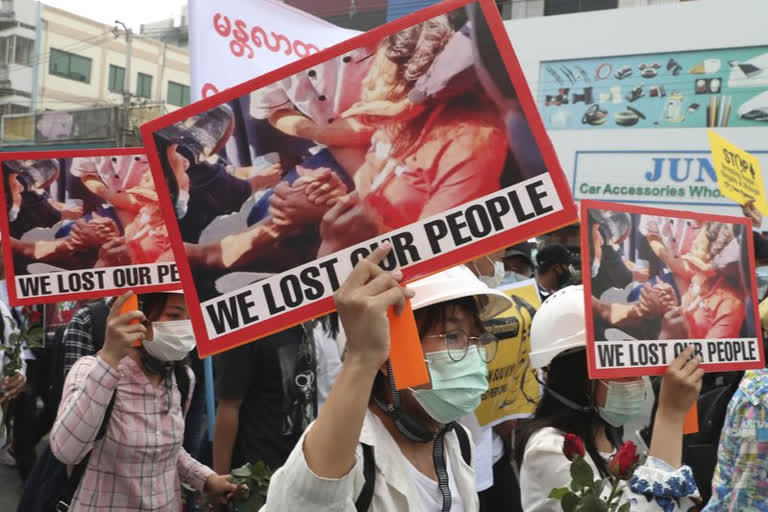Yangon: Security forces in Myanmar ratcheted up their pressure against anti-coup protesters Saturday, using water cannons, tear gas, slingshots and rubber bullets against demonstrators and striking dockworkers in Mandalay, the nation’s second-largest city.
At least five people were injured by rubber bullets and had to be carried away in ambulances, according to an Associated Press journalist who witnessed the violence.
Protesters and residents were forced to flee the neighbourhood amid the violence, as security forces chased after them.
There were reports of sounds that resembled gunfire, but it was not immediately clear whether it was tear-gas canisters being fired or live bullets. A group of journalists was forced to flee after being hit with tear gas and slingshot projectiles.
Earlier in the week in Mandalay, security forces cracked down on state railway workers in a similar fashion after they joined the civil disobedience movement.
Read:| Myanmar military regime backed by China cracks down on protesters
Less than an hour after the 8 p.m. curfew started on Wednesday, gunshots were heard as more than two dozen police officers with shields and helmets marched past railway workers’ housing. Numerous videos posted on social media showed muzzle flashes as shots were heard, and some police shot slingshots and threw rocks at the buildings. Marching chants of “left, right, left, right” could be heard along with shouts of “shoot, shoot.”
U.S. State Department spokesperson Ned Price offered his government’s condolences Friday and reiterated calls on the military to refrain from violence against peaceful protesters.
Across the country, protests showed no signs of slowing down despite recent crackdowns by the military government — including a sixth consecutive night in which the internet was cut for many hours.
Demonstrators also gathered elsewhere in Yangon, chanting and holding placards and images of Nobel laureate Aung San Suu Kyi, whose democratically elected government was overthrown.
Aerial images were taken Friday showed streets in Yangon painted with the words “The military dictatorship must fall” in Burmese, and “We want democracy” and “Free our leaders” in English.
Security forces have been relatively restrained so far in confronting protesters in Yangon but appeared to be toughening their stance in areas where there is fewer media presence.
Police used force for a second straight day Friday to arrest protesters in Myitkyina, the capital of the remote northern state of Kachin. The Kachin ethnic minority has long conflicted with the central government, and there has been an intermittent armed struggle against the army there for decades.
Read:| Myanmar anti-coup protesters honour woman shot dead by police
The junta seized power after detaining Suu Kyi and preventing Parliament from convening, saying elections in November were tainted by voting irregularities. The election outcome, in which Suu Kyi’s party won by a landslide, was affirmed by an election commission that has since been replaced by the military. The junta says it will hold new elections in a year.
The U.S., British and Canadian governments have imposed sanctions on the new military leaders, and they and other nations have called for Suu Kyi’s administration to be restored.
The coup was a major setback to Myanmar’s transition to democracy after 50 years of army rule. Suu Kyi came to power after her National League for Democracy party won a 2015 election, but the generals retained substantial power under the constitution, which was adopted under a military regime.
AP



